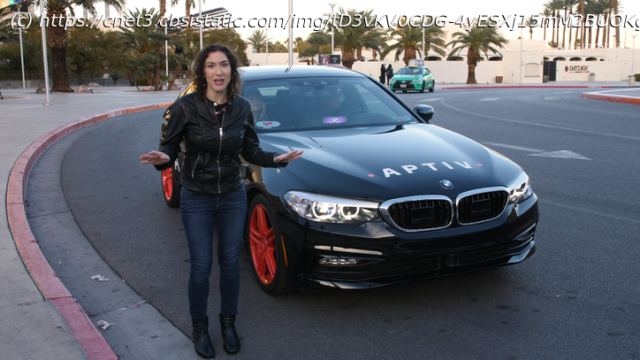Here’s what it’s like to be a passenger in an autonomous car.
The first time I opened my Lyft app to summon a ride here at Las Vegas for CES 2019, I nearly screamed. Instead of seeing the usual map interface, a message popped up offering me a chance to ride around Las Vegas in an autonomous car. HELL, YEAH! I couldn’t opt-in fast enough, imagining myself pulling up to events in a self-driving Lyft, the envy of all my coworkers and friends.
And… it never happened. Although Lyft’s autonomous car program in Las Vegas has been fully functioning since May 2018, the fleet is still a mere 30 cars out of hundreds of drivers, and I kept getting paired up with human beings instead. Thankfully, Lyft stepped in to help and I finally got my ride around the neon-splashed, car-choked Strip.
For car enthusiasts and my colleagues over at CNET sister site Roadshow, the novelty of self-driving cars may have lost its shine. But for everyday riders like me, cars that maneuver themselves are a magical glimpse at an inescapable future where programs and sensors, instead of people, rule the road.
Lyft’s interest in self-driving cars is just one example of how autonomous technology will change driving behavior. Self-driving cars are being embraced by the entire automotive industry, from Chevy to Volvo. Reducing a dependence on human drivers will make roads safer in theory, as the technology on-board — lidar, cameras and a pile of sensors — are designed to help avoid crashes, swerves and sudden shifts in speed. The advent of 5G wireless technology will also play a significant role, helping autonomous cars and buses talk to each other and to smart lights, to keep traffic patterns more predictable, and therefore more safe.
However, this idyllic vision is still years, or possibly decades away, and the going is slow. Lyft rival Uber took its self-driving cars off the road after a fatal pedestrian crash in Arizona last March, the first ever for a fully autonomous development vehicle. And regulators and passengers alike remain skittish about the safety of a 3-ton machine that can get around on its own.
I share some of these concerns, but they do nothing to cool my curiosity about what it’s like to be in a self-driving car. I live in Silicon Valley and work in San Francisco, home to Google, Lyft, Apple and Waymo. You can’t throw a loaf of sourdough without hitting a self-driving car on a test drive from one of a couple dozen companies experimenting with the emerging technology.
But seeing them drive by on the highway or city streets is one thing. Sitting in the back on a regular ride, feeling the car accelerate, brake, and turn all on its own, is a completely different experience.






